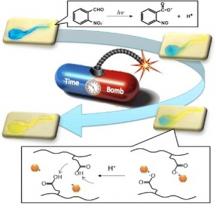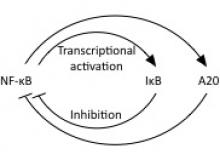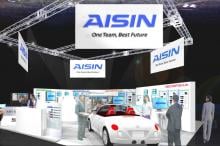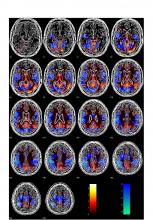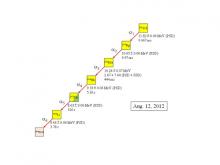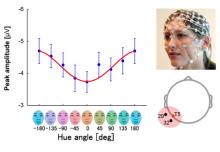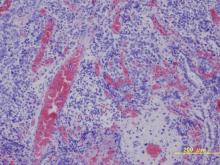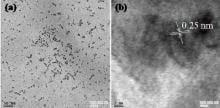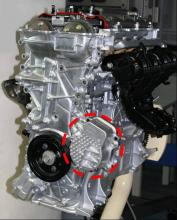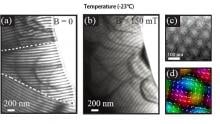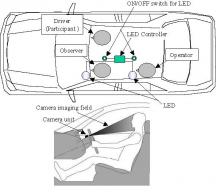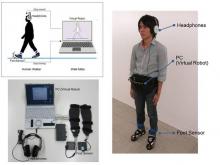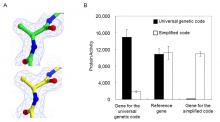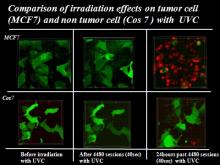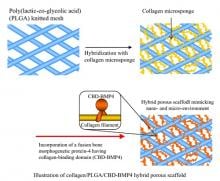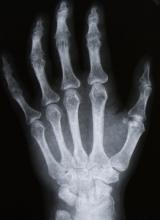Japan
News

12 Nov 2012
Tahara, Aichi, Japan, 12 Nov - Global developments in materials science, robotics, computing, earthquake prediction and electric vehicles are just some of the other topics due to be presented by pre-eminent researchers at the Irago Conference. The conference will be streamed live on USTREAM for anyone who cannot attend.
01 Nov 2012
Tsukuba, 1 November 2012 - Researchers in Japan have developed a technique which allows them to control and target drug delivery to specific sites of the body at specific times, thus reducing side effects and improving treatment dramatically. The results were published recently in the journal Science and Technology of Advanced Materials.
31 Oct 2012
(Tokyo, 31 October 2012) Researchers at Tokyo Institute of Technology and the Weizmann Institute of Science identify a means of controlling biological processes that could help treatments for immune disease, neurological disorders and cancer.

30 Oct 2012
Opinion piece from Prof. Yukari Kawahara or Waseda University - Have you ever heard the expression, family values? This term, while unfamiliar to people in Japan, has become one of the major issues in the U.S. presidential election.
17 Oct 2012
(Aichi, Japan, 17 October, 2012) - Fortune Global 500 ranked Aisin Seki Co., Ltd will exhibit its latest innovative automobile technology at the 19th World Congress on Intelligent Transport Systems (ITS) in Vienna, 22 to 26 October 2012.
05 Oct 2012
Tokyo Institute of Technology researchers use fMRI datasets to train a computer to predict the semantic category of an image originally viewed by five different people.

03 Oct 2012
Organised by the Electronics-Inspired Interdisciplinary Research Institute (EIIRIS) at Toyohashi University of Technology, The Irago Conference aims to enhance mutual understanding between scientists, engineers, policy makers, and experts from a wide spectrum of pure and applied sciences in order to resolve major global issues.
27 Sep 2012
Tokyo, Japan, 27 September - The most unambiguous data to date on the elusive 113th atomic element has been obtained by researchers at the RIKEN Nishina Center for Accelerator-based Science (RNC).
24 Sep 2012
(Aichi, Japan, 24 September, 2012) – Aisin Seki Co., Ltd, Japan has developed the first power sliding door system that houses all the major components in the door side. The new approach allows the doors to be compatible with a wider range of vehicles than previous power sliding door systems and leaves more space inside the vehicle.
24 Sep 2012
(Toyohashi, Japan, 24 September 2012) Toyohashi Tech researchers use ‘robotic social trash boxes’ to investigate interactions between humans and robots for improving robot-to-human communications.
24 Sep 2012
(Toyohashi, Japan, 24 September 2012) From ‘sociable trash boxes’ to surface plasmons to neuroscience—the Toyohashi Tech e-Newsletter offers reviews of its research activities news updates of the latest events.
20 Sep 2012
(Okayama, Japan, 20 September 2012) This e-Bulletin highlights pioneering insights into water splitting/photosynthesis, analysis of the Itokawa asteroid brought to Earth by Japan's Hayabusa space probe, stemming the spread of cancer and identification of a rice transporter for manganese and cadmium uptake
20 Sep 2012
(Okayama, Japan, 20 September 2012) - Okayama University researchers demonstrate that cancer stem cells can be produced from normal stem cells for new therapies to combat cancer
13 Sep 2012
Work led by Amita Pathak at the Indian Institute of Technology has produced water-soluble C-dots that selectively emit light across the entire visible range without any surface coating. The properties of these new C-dots make them ideal for a variety of bioimaging applications and for medical diagnostics.
30 Aug 2012
The improved process enables formation of high quality titanium alloy coating films, which had been difficult with the conventional technique.
30 Aug 2012
The low cost, high efficiency electric pump offers an environmentally friendly alternative to mechanical counterparts. Aisin Seki Co., Ltd has now successfully developed a smaller, cheaper electric cooling pump through some effective efficiency optimisations.
28 Aug 2012
Japanese scientists have succeeded in fabricating a crystalline thin film with a film thickness of nanometer order, in which molecules of a 3-dimensionally strong porous coordination polymer (PCP) are oriented in a designated direction, and demonstrated that this thin film has a reversible gas adsorption/desorption reaction function.
28 Aug 2012
A research group including the NIMS Superconducting Properties Unit and others, in joint work with the University of Fukui, discovered a new material, NaCr2O4, which was developed by ultra-high pressure synthesis and displays a novel type of colossal magnetoresistance effect.
28 Aug 2012
RIKEN, the University of Tokyo, and NIMS succeeded in forming a skyrmion crystal, in which electron spin is aligned in a vortex shape, in a microdevice using the helimagnet FeGe, and driving the skyrmion crystal with an ultra-low current density less than 1/100,000 that of the current necessary to drive magnetic domain walls in ferromagnets.
28 Aug 2012
(Aichi, Japan, 28, 2012) - Aisin Seki Co., Ltd, Japan, has developed an eyelid monitor and identified symptoms in eyelid behaviour that indicate drowsiness in motorists. The new automated technology (Intelligent Transport System (ITS)) eliminates the fallibility of human judgement in gauging when drowsiness is becoming a driving hazard.
27 Aug 2012
(Tokyo, 27 August 2012) Tokyo Tech ‘s Yoshihiro Miyake and colleagues have developed an innovative, non-invasive therapeutic intervention that may improve the mobility, stability, and quality of life of Parkinson’s disease patients.
27 Aug 2012
(Tokyo, 27 August 2012) The bulletin contains cutting research from fish collagen for cosmetics and medical applications to multi-petaflop supercomputing, and environmentally responsive organic materials.
24 Aug 2012
(Tokyo, 24 August 2012) Tokyo Institute of Technology researchers show simpler versions of the universal genetic code can still function in protein synthesis. In addition to understanding early primordial organisms, the research could lead to applications preventing non-natural genetically modified materials from entering the natural world.
21 Aug 2012
Medical scientists at Tokai University School of Medicine in Japan announce the development of a new cancer therapy using ultra violet C (UVC) pulses of light. Details of these findings will be described by Johbu Itoh at the International Congress of Histochemistry and Cytochemistry (ICHC 2012), 26–29 August, 2012, Kyoto.

07 Aug 2012
(Tokyo, August 7, 2012) – Researchers at Tamagawa University announced today that they had proved the incompleteness and limit of the security theory in quantum key distribution. The present theory cannot guarantee unconditional security. Details will be given at the SPIE conference on Quantum Communication and Quantum Imaging on August 15, 2012.

31 Jul 2012
The Irago Conference 2012 (Asia-Pacific Interdisciplinary Research Conference 2012) will be held November 15-16, 2012 in Irago, Aichi prefecture, Japan.
26 Jul 2012
Researchers in Japan demonstrate a new protein binding approach for effectively promoting bone regeneration. Current treatments for bone defects and bone tissue regeneration have significant limitations. Now a new method that immobilises a fusion protein in a hybrid collagen-polymer supportive scaffold shows promise for bone tissue engineering.
23 Jul 2012
An artificial bone scaffold produced by researchers in South Korea could enhance the treatment of bone damage and defects through bone grafts.
Researchers
Sorry, no researchers coming up for this topic.
Giants in history
Ruby Sakae Hirose (1904 – 1960) was a Japanese-American scientist whose research contributed significantly to our understanding of blood clotting, allergies and cancer.
Haisako Koyama (1916 – 1997) was a Japanese solar observer whose dedication to recording sunspots – cooler parts of the sun’s surface that appear dark – produced a sunspot record of historic importance.
Michiaki Takahashi (17 February 1928 – 16 December 2013) was a Japanese virologist who developed the first chickenpox vaccine.
Toshiko Yuasa (11 December 1909 – 1 February 1980) was the first Japanese female physicist whose research on radioactivity shed light on beta decay – the process in which an atom emits a beta particle (electron) and turns into a different element.
Baron Kitasato Shibasaburo (29 January 1856 – 13 June 1931) was a Japanese physician and bacteriologist whose work led to a new understanding of preventing and treating tetanus, diphtheria and anthrax.
By isolating soil microorganisms and studying the compounds they produce, Satoshi Omura (born 1935) discovered almost 500 organic compounds with unique properties that were produced by these microorganisms, including many new antibiotics.
In 1915, pathologist Katsusaburo Yamagiwa and his research assistant Koichi Ichikawa became the first to prove that chronic exposure to chemicals can cause cancer.
In 1915, Koichi Ichikawa along with pathologist Katsusaburo Yamagiwa became the first to prove that chronic exposure to chemicals can cause cancer.
Reiji Okazaki (8 October 1930 – 1 August 1975) and Tsuneko (7 June 1933) were a Japanese couple who discovered Okazaki fragments – short sequences of DNA that are synthesized during DNA replication and linked together to form a continuous strand.
Tsuneko (7 June 1933) and Reiji Okazaki (8 October 1930 – 1 August 1975) were a Japanese couple who discovered Okazaki fragments – short sequences of DNA that are synthesized during DNA replication and linked together to form a continuous strand.
Husband and wife team, Kimishige (3 December 1925 – 6 July 2018) and Teruko Ishizaka (28 September 1926 – 4 June 2019) discovered the antibody class Immunoglobulin E (IgE) that triggers allergic reactions. They also discovered that IgE antibodies attach to white blood cells, known as mast cells, releasing histamine, which causes allergic reactions.
Husband and wife team, Kimishige (3 December 1925 – 6 July 2018) and Teruko Ishizaka (28 September 1926 – 4 June 2019) discovered the antibody class Immunoglobulin E (IgE) that triggers allergic reactions. They also discovered that IgE antibodies attach to white blood cells, known as mast cells, releasing histamine, which causes allergic reactions.
Japanese chemist Takamine Jokichi (3 November 1854 – 22 July 1922) founded the Tokyo Artificial Fertilizer Company, where he isolated a starch-digesting enzyme (named takadiastase) from the fungus Aspergillus oryzae.
Hideki Yukawa (23 January 1907 – 8 September 1981) was awarded the Nobel Prize in Physics in 1949 for predicting the existence of the pi meson subatomic particle. Japan’s first Nobel laureate, Yakawa also expressed his support for nuclear disarmament by signing the Russell–Einstein Manifesto in 1955.
Shinichiro Tomonaga (31 March 1906 – 8 July 1979), together with Richard Feynman and Julian Schwinger, was awarded the Nobel Prize in Physics in 1965, for their contributions to advance the field of quantum electrodynamics. Tomonaga was also a strong proponent of peace, who actively campaigned against the proliferation of nuclear weapons and promoted the peaceful use of nuclear energy.
Japanese chemist Kenichi Fukui (4 October 1918 – 9 January 1998) was the first Asian scientist to be awarded the Nobel Prize in Chemistry. Together with Roald Hoffman, he received this honour in 1981 for his independent research into the mechanisms of chemical reactions.
Minoru Shirota (April 23, 1899 – March 10, 1982) was a Japanese microbiologist who invented the popular fermented drink Yakult.
Japanese physicist Ukichiro Nakaya (1900-1962) made the world’s first artificial snowflakes. He started his research on snow crystals in the early 1930s at Hokkaido University, where there is an unlimited supply of natural snow in winter. By taking over 3,000 photographs, he established a classification of natural snow crystals and described their relationship with weather conditions.
The techniques that make industrial pearl culturing possible were developed over a century ago at the Misaki Marine Biological Station in Japan. The station’s first director, Professor Kakichi Mitsukuri, emphasized to Kokichi Mikimoto in 1890 that stimulating pearl sac formation was important for pearl growth, and they went on to successfully develop methods for culturing pearls.
The field of solid-state ionics originated in Europe, but Takehiko Takahashi of Nagoya University in Japan was the first to coin the term ‘solid ionics’ in 1967. ‘Solid-state ionics’ first appeared in 1971 in another of his papers, and was likely a play on ‘solid-state electronics’, another rapidly growing field at the time.
Chika Kuroda (24 March 1884 – 8 November 1968) was a Japanese chemist whose research focussed on the structures of natural pigments.
Motoo Kimura (13 November 1924 – 13 November 1994) was a Japanese theoretical population geneticist who is best remembered for developing the neutral theory of molecular evolution.
Osamu Shimomura (27 August 1928 – 19 October 2018) was a Japanese organic chemist and marine biologist who dedicated his career to understanding how organisms emitted light.
Kikunae Ikeda (8 October 1864 – 3 May 1936) was a Japanese chemist who discovered the fifth basic taste, umami.
Umetaro Suzuki (7 April 1874 – 20 September 1943) was a Japanese scientist best remembered for his research on beriberi, a disease caused by vitamin B1 deficiency, characterized by limb stiffness, paralysis and pain.
Kono Yasui (16 February 1880 – 24 March 1971) was a Japanese botanist who researched the genetics of poppies, corn and spiderworts and surveyed the plants that had been affected by the nuclear fallout after the atomic bombings of Hiroshima and Nagasaki.
Hitoshi Kihara (1893 – 1986) was one of the most famous Japanese geneticists of the 20th century. One of his most significant contributions was identifying sex chromosomes (X and Y) in flowering plants.
Michiyo Tsujimura (17 September 1888 – 1 June 1969) was a Japanese agricultural scientist and biochemist recognized for her research of green tea components.
A Japanese surgeon, Tetsuzo Akutsu (20 August 1922 – 9 August 2007) built the first artificial heart capable of keeping an animal alive.
Ogino Ginko (3 March 1851 – 23 June 1913) was the first registered female doctor to practise modern medicine in Japan.
Japanese geochemist Katsuko Saruhashi developed the first method and tools for measuring carbon dioxide in seawater



